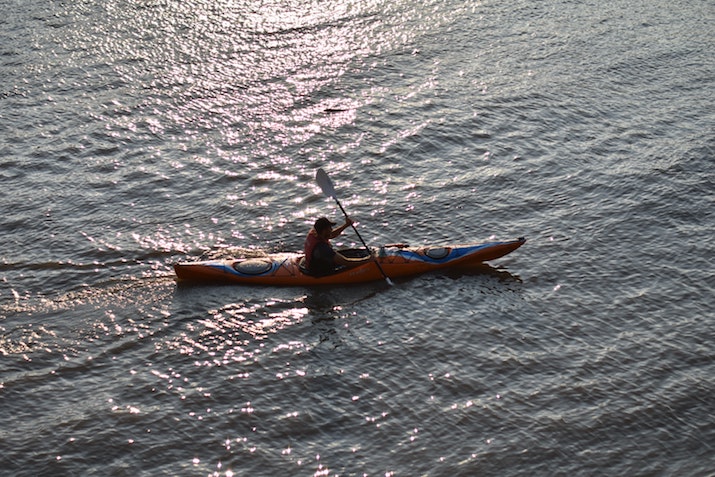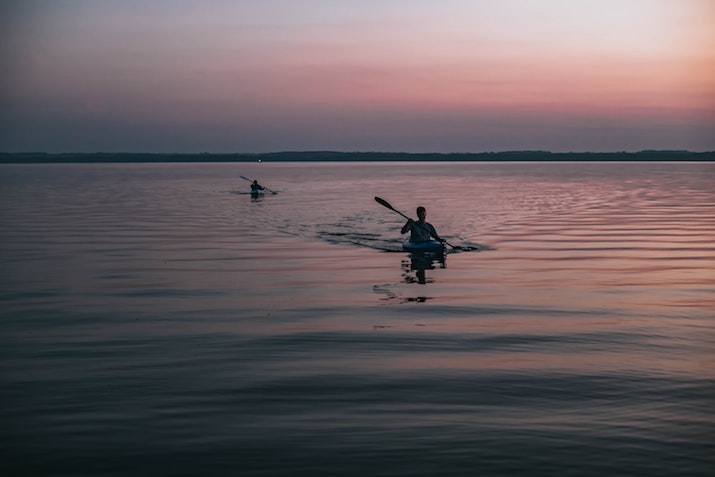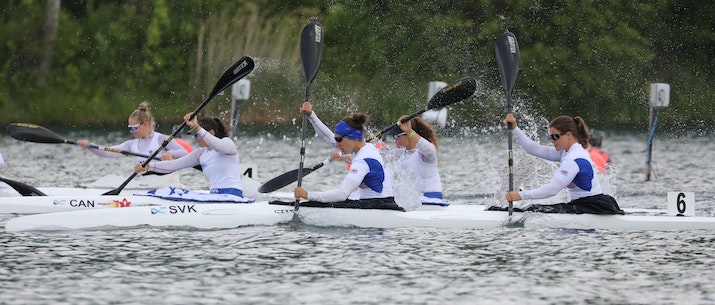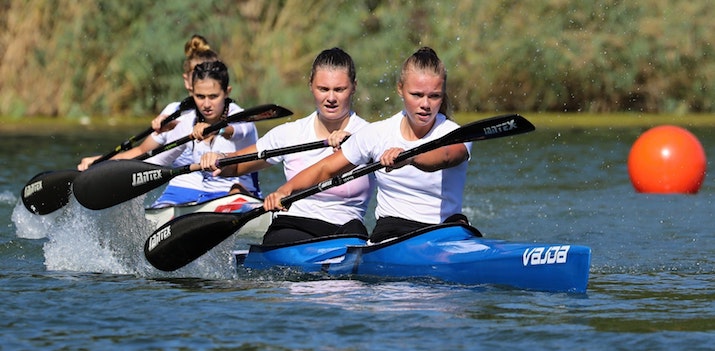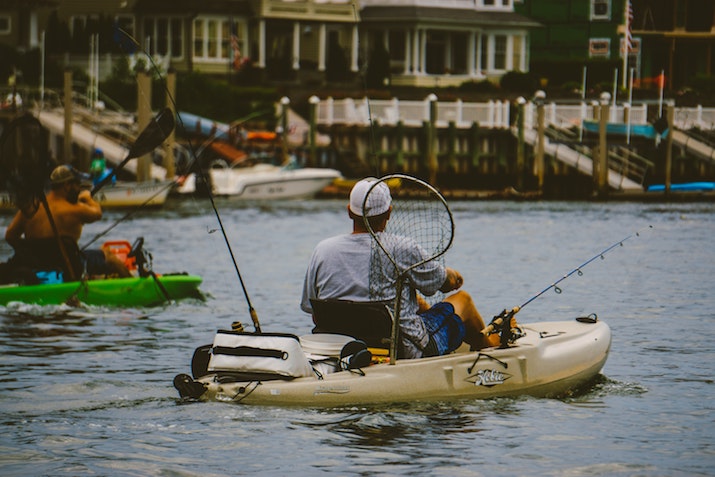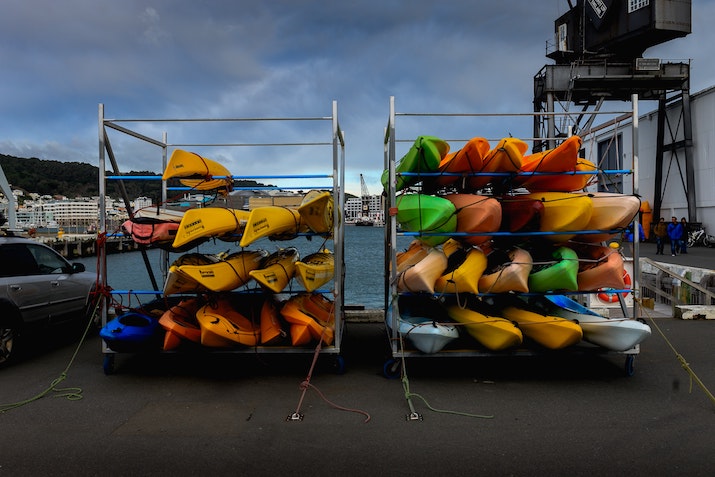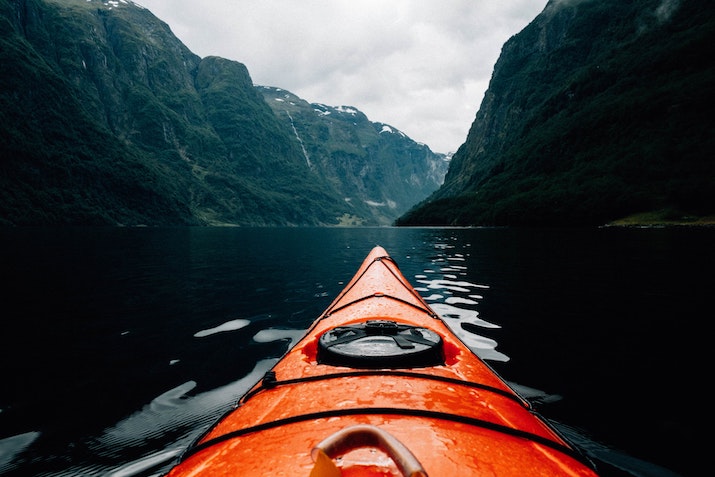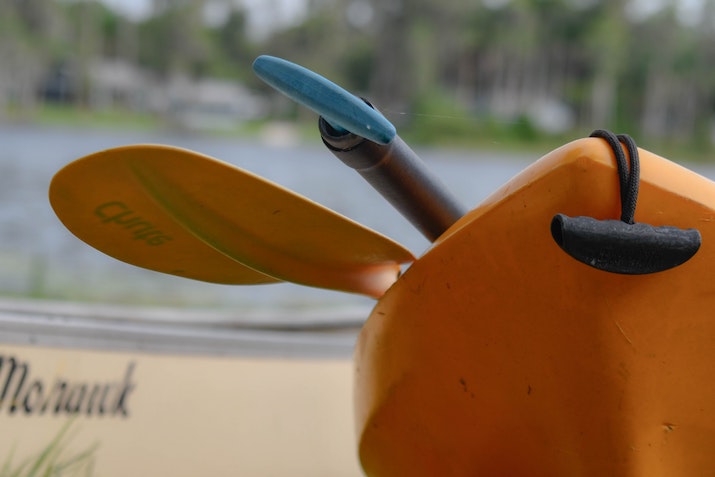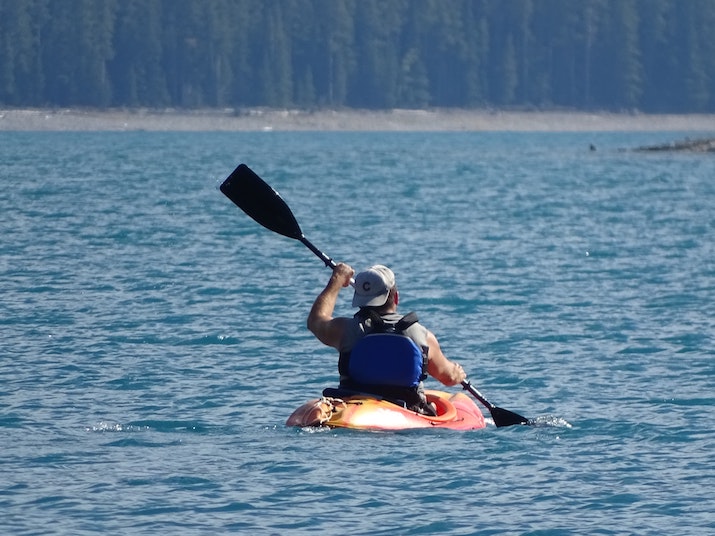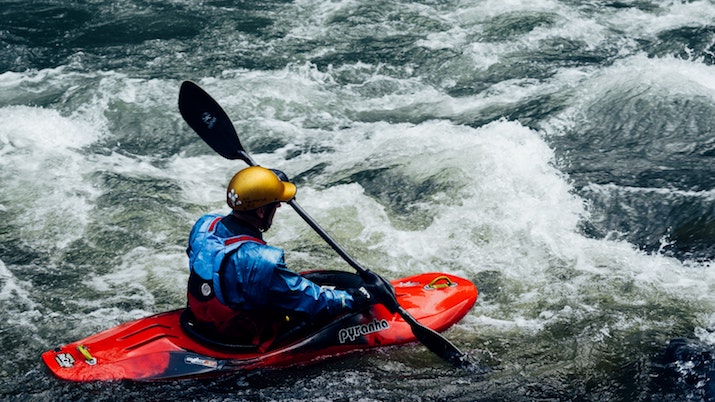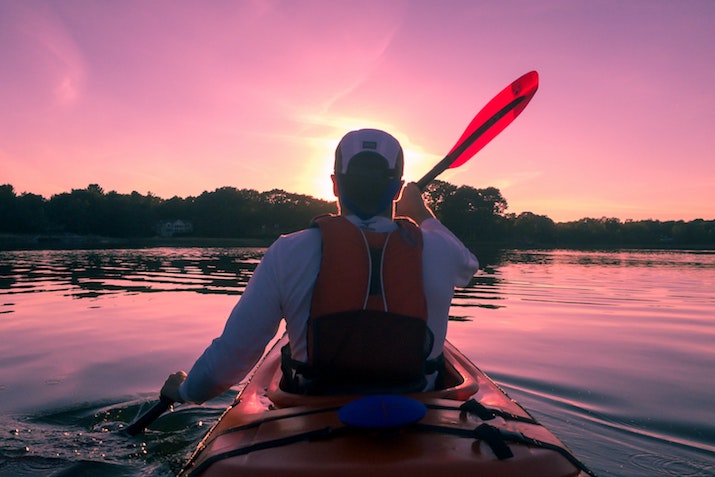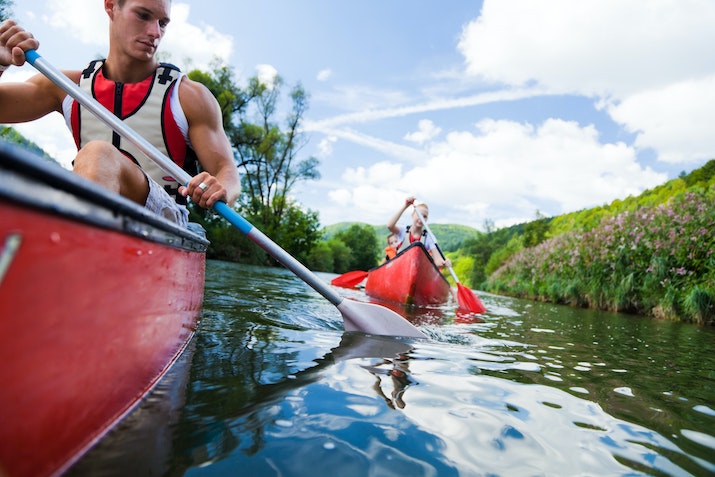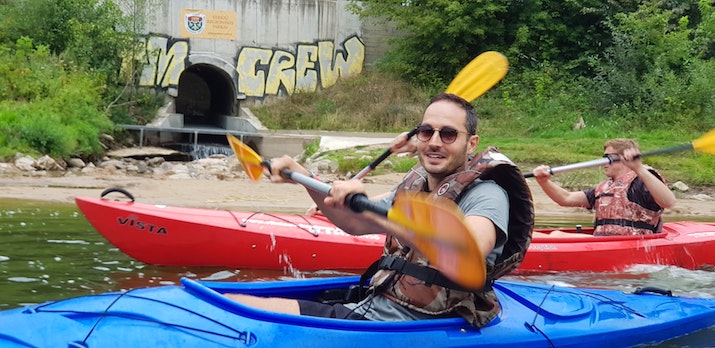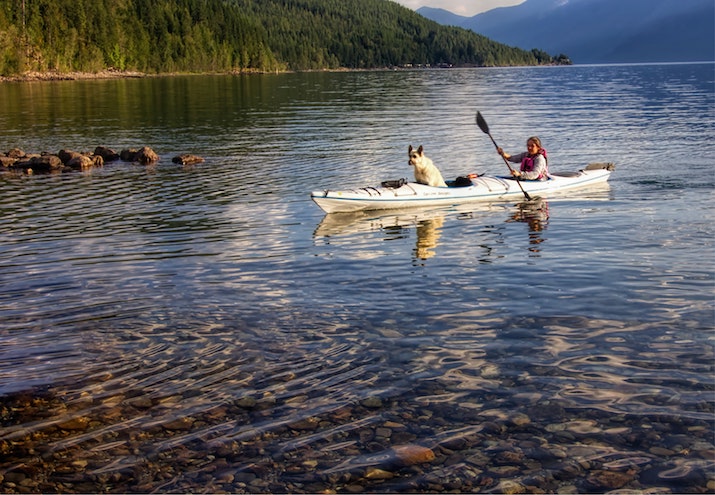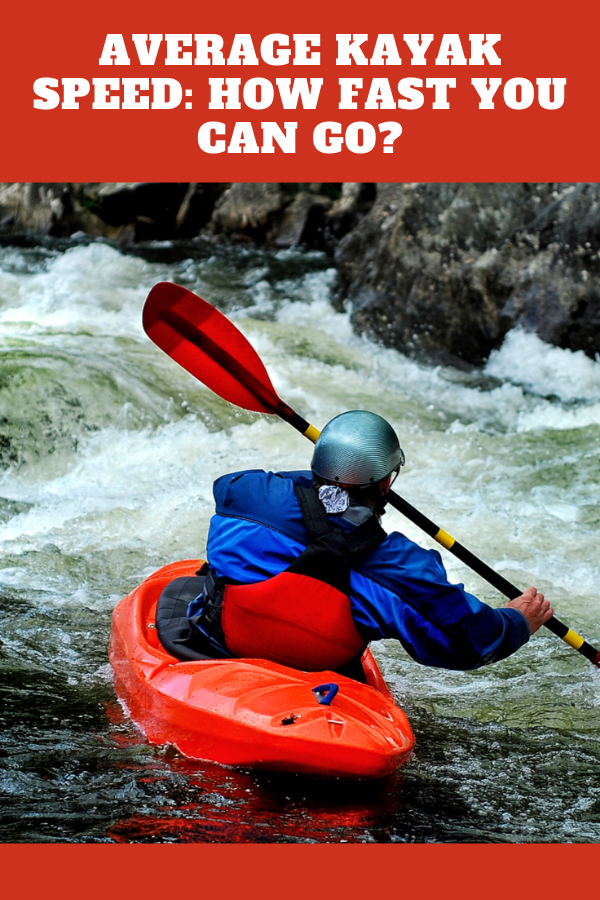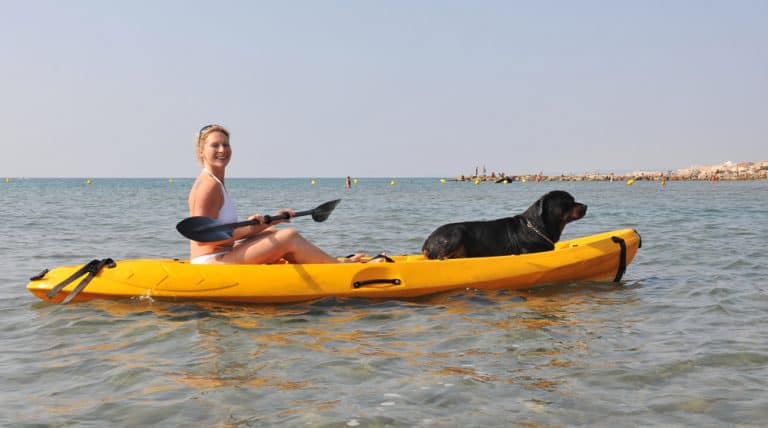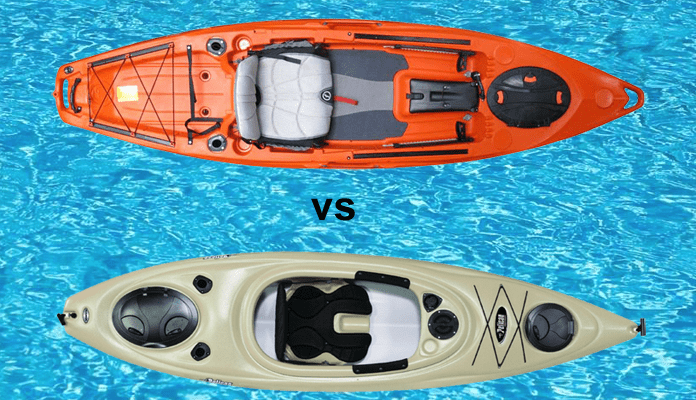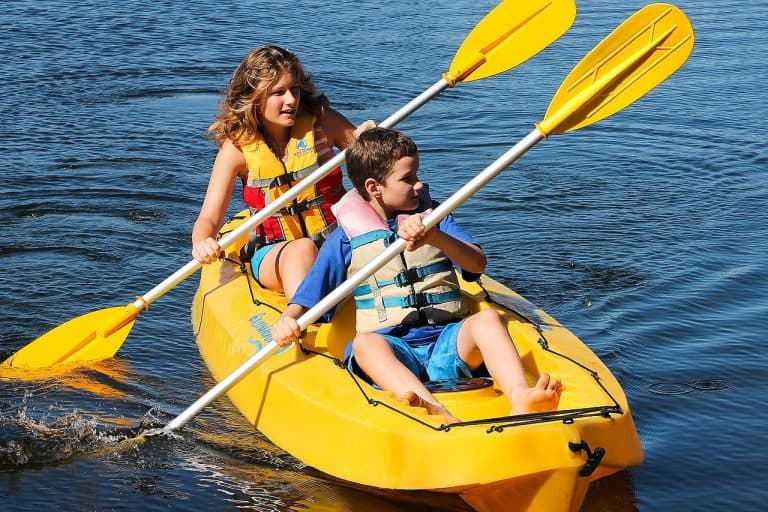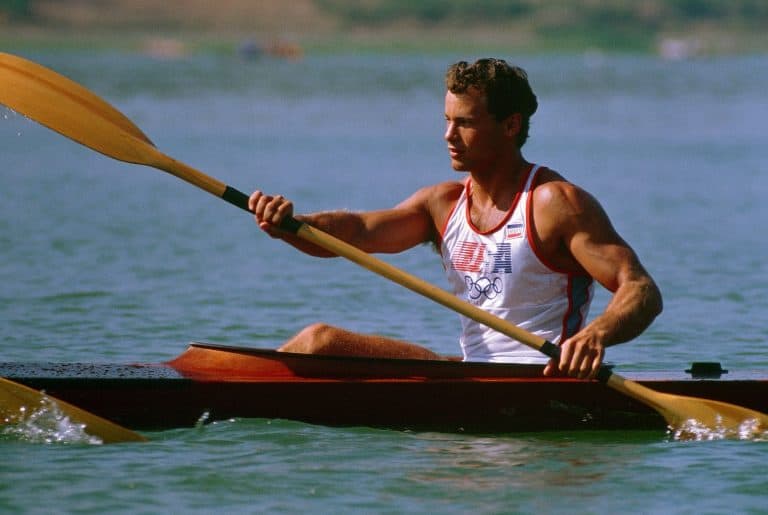Personally, it was a pretty natural progression from learning how to pack my kayak for a multi-day camping trip and plan for how much distance I could cover in a day.
Although I was familiar with my average walking speed on backpacking trips, I had no idea what my average kayaking speed might be.
How fast you can go in a kayak is important to know if you are planning a multi-day kayaking adventure. It can even be important for a single-day journey if you are planning to paddle from point to point.
For example, I just did an eight-mile stretch on the Green River in Kentucky and I finished in about 2.25 hours. My average kayak speed for that trip, then, was about 3.5 miles per hour.
To be honest, that is actually a little on the high side because I was assisted by the current of the river. So, your average kayak speed can actually vary depending on several important environmental physical factors.
In this guide, we will provide a general average kayak speed that you can use for trip planning purposes. We will also explore how different factors impact your average kayak speed and what could be possible if you are really pushing it.
So let’s explore your need for speed today!
Photo by Nikolay Kovalenko on Unsplash
What is Average Kayak Speed?
Photo by Devin Avery on Unsplash
Most kayakers average about two miles per hour when paddling for multiple hours. You can certainly achieve faster speeds over shorter distances, but two miles per hour (similar to the average walking speed) is a healthy and safe baseline for average kayak speed.
Using this baseline will allow you to plan longer kayaking trips because you will be able to estimate how much distance you might cover in a given time period.
If, for example, you are comfortable spending 4-5 hours paddling per day, you can reasonably expect to cover a maximum of 8-10 miles in that span of time.
This average kayak speed accounts for brief pauses to stay hydrated or consume snacks. It will not, however, account for longer stops on land for bathroom and meal breaks, so you will need to add time for these types of stops when planning a long-distance kayaking trip.
How Fast Can You Go In A Kayak?
Photo by Eduard Labar on Unsplash
It is not uncommon for seasoned and fit kayakers to reach average kayak speeds of up to five miles per hour. It is rare, however, for that kind of speed to be maintained for multiple hours at a time.
So you will likely only see those kinds of average kayak speeds in short-distance kayak races. You might, however, see kayakers average five miles per hour (or more) when paddling with a favorable current or wind assisting them.
Paddlers of the best whitewater kayaks, for example, are aided by river flow (which is usually measured in cubic feet per second, or CFS).
On my recent paddle, the river itself was meandering at a relatively slow rate of roughly 1.5 miles per hour. So, while I was able to average 3.5 miles per hour over that eight-mile stretch, roughly 40 percent of my speed was actually generated by the river.
On rivers with faster flow rates, then, you might see paddlers cover longer distances in relatively short periods of time. This doesn’t necessarily mean they are paddling faster, but they will be taking advantage of the river’s higher flow rate to cover more ground.
Conversely, heavy winds or strong ocean currents can work in favor of the paddler to help him or her achieve a higher average kayak speed.
If you do not plan your paddle properly, however, it is just as easy for those currents to work against you when you are just trying to get back to your launching location.
What Is The Fastest Recorded Kayak Speed?
Photo by Eduard Labar on Unsplash
Who does not enjoy even just a brief dive into the annals of the Guinness Book of World Records?
According to Guinness, the fastest speed achieved by someone in a kayak is just over 39 miles per hour (62.94 kilometers per hour). The major caveat to that record is that, for reasons unknown to us, that record was achieved on a kayak moving over snow.
Additionally, Guinness states that the farthest distance traveled in a canoe or kayak in a 24-hour period is 156.4 miles (251.71 kilometers). That translates to an average kayak speed of roughly 6.52 miles per hour over those 24 hours.
Factors That Impact Average Kayak Speed
Your average kayak speed will vary based on numerous factors. Some are in your control and some will be completely uncontrollable, but here is a quick summary of factors that impact average kayak speed.
Kayak Weight
Photo by Harrison Kugler on Unsplash
Knowing how much your kayak weighs once it is fully loaded is important when estimating your average kayak speed. Obviously, heavier kayaks are going to require more strength and effort just to get them moving.
As a result, they will often have slower average speeds over long distances. That being said, heavier kayaks will sit lower in the water and be less affected by crosswinds, waves, and currents.
Some heavier kayaks, then, can actually achieve higher average speeds in less-than-favorable paddling conditions. Plus, they can gain and maintain more momentum if you are paddling on a river with a healthy amount of current.
Lighter kayaks, on the other hand, will sail through the water with less resistance and require much less effort to achieve a higher average kayak speed.
The downside of a lighter kayak, however, is that you will be more susceptible to the negative impacts of currents and heavy winds.
Anatomy
Photo by James Coleman on Unsplash
The anatomy of a kayak will also impact how fast you are able to go in it. The width of your kayak (also known as beam) is one of the first parts of your kayak’s anatomy to pay attention to when it comes to average kayak speed.
Most of the fastest kayaks out there are 22” across or skinnier. Kayaks that are this skinny can often feel unstable for beginners, but they offer a lot less drag and resistance compared to some of the best ocean fishing kayaks with beams upwards of 35 inches across.
In addition, to width, length also comes into play when it comes to the average speed of your kayak. Most longer touring kayaks are better at maintaining higher average speeds than their shorter river fishing counterparts, for example.
The hull shape and cockpit design of a kayak can also impact your average speed. Many whitewater kayaks have rounded hulls because this type of hull offers the least resistance when you are kayaking at high speeds over larger rapids.
On flat water, however, a narrower and deeper V-shaped hull is often preferred for the fastest kayaks. Plus, the best sit in kayaks are almost always going to be able to obtain higher average kayak speeds than recreational sit on top kayaks.
Location
Photo by Benjamin Davies on Unsplash
Where you paddle will also play a role in your average kayak speed and we have already mentioned a little bit about this. If you are taking a multi-day river trip, for example, the distance you can cover every day will be aided by the flow of the river (assuming you are paddling downstream!).
If you are paddling on flat water, however, the only thing that can aid your average kayak speed will be wind. Some lakes, however, can see heavy winds that allow you to kayak home a lot faster than you paddled out (if you plan properly).
Of course, whitewater paddling on Class IV and V rapids is probably going to see some of the highest average kayak speeds. This is because these environments are going to be full of moving water that will propel your kayak forward without you exerting too much effort.
Your challenge in that type of environment, however, will be exerting effort to steer and maneuver your kayak through, over, and around rapids safely.
For those interested in paddling in calm coastal waterways, you will likely deal with less wind than if you were paddling on the open ocean. Your paddle, however, can still be impacted by tidal flows, however.
So, anytime you are paddling in saltwater you should pay attention to the tidal charts for your area. This is especially important for open ocean paddling because where you put your kayak into the water can easily become inaccessible as the tides shift.
In addition, ocean paddling requires study and consideration of predominant ocean currents in your region. These currents can either aid or stymie your average kayak speed depending on their speed and direction.
Paddle Design
Photo by Michael Barber on Unsplash
The design of your kayak paddle will also aid (or hinder) the efficiency of your paddling. Even the best kayak paddles under $150, for example, will be less efficient than higher-end paddles with correspondingly higher price tags.
For one, the blade design on high-end paddles will move through the water more efficiently and allow you to generate more power with each paddle stroke. This will reduce energy loss during the transfer between your body and the blade so that your kayak slows down less between strokes.
Many higher-end paddles are also made of lighter materials that require less energy to hold and move. Having a lighter paddle will result in less fatigue and allow you to maintain strong, consistent paddle strokes over a longer period of time.
While you definitely do not have to overspend on a high-end kayak paddle if you are a beginner, investing in a better paddle will eventually become a necessity when you are tackling longer trips and seeking to improve your average kayak speed.
Your Fitness Level and Technique
Photo by G-R Mottez on Unsplash
This last point is pretty obvious, but your level of fitness will also impact your average kayak speed. If you are able to exert more energy into your paddle strokes consistently (and over a longer period of time), you will be able to average a higher speed over distance.
In addition to your fitness level, your paddling technique will also impact your speed. If you are executing proper trunk rotation and avoiding pulling your blade back too far before starting your next paddle stroke, you will be paddling much more efficiently than someone overstretching and neglecting to use their core muscles.
The reality of improving both your fitness level and your technique is that they require practice. The best practice for kayaking is…well…kayaking!
While there are land-based machines for rowing versus kayaking, kayakers have to get out on the water to practice and push their physical limits. There is no substitute for it, but the good news is that you will be getting stronger every time you go out.
When it comes to your technique, however, it pays to enroll in a kayaking lesson every now and then. Even experienced kayakers do it because we are constantly learning new things about how to improve our technique and paddle more efficiently.
Tips For Kayaking Faster
You do not need the desire to set a new Guinness world record to benefit from learning how to kayak faster.
Whether you are just trying to keep up with your kids or you want to make better time on multi-day kayaking adventures, here are a few tips for kayaking faster.
Engage Your Larger Muscles
Photo by Hatham on Unsplash
Many beginners make the mistake of thinking that kayaking is all an arm workout. To paddle faster and more efficiently, however, you will need to engage the larger muscles in your shoulders, core, and back.
With proper technique, we actually transfer energy from our feet through our core, shoulders, arms, and hands before it enters our kayak paddle.
This is why kayaking is a full-body exercise but it will only be so if you actually consciously focus on engaging your larger muscles with each paddle stroke.
Improve Your Body Position
Photo by Pete Nowicki on Unsplash
If you want a super lazy and relaxed paddle, you can absolutely loosen up your kayak seat and recline. If you are trying to paddle faster, however, you will need to sit up straight so that it easier to engage those larger muscles we mentioned in the last section.
Make sure your feet are gently pushed into the foot pedals or footrests in the cockpit of your kayak, for starters. Then, make sure your back is straight and your knees are slightly bent.
Use More Blade
Photo by Razvan Chisu on Unsplash
Inserting more blade at the end of your kayak paddle down into the water will also help you generate more power with each stroke.
The best way to do this is actually to raise the hand higher on the side of your paddle that is opposite to the blade you want to insert into the water.
This will bring the entire paddle shaft at a higher angle in relation to the water’s surface (closer to 90 degrees). It will also make it easier for you to insert the blade deeper into the water to generate more power and straight-line speed.
Relax Your Grip
Photo by Zilvinas Ka on Unsplash
This one might be slightly counterintuitive, but relaxing your grip on the shaft of your paddle is all about minimizing fatigue. There is no need to grip your paddle shaft like you are driving a windy road with hairpin turns at midnight.
It is easiest to focus on relaxing your grip on your top hand as you are pulling your paddle with your lower hand. The palm of your upper hand will be plenty capable of gently pushing that side of your paddle forward as you allow your fingers to relax.
Final Thoughts
Photo by Claud Richmond on Unsplash
If you are planning a longer kayak trip or getting into kayak racing, we would highly recommend getting a GPS or GPS watch. These will make it easier to save planned routes and calculate your average kayak speed on the fly.
Also, it will be helpful to get in the habit of scheduling weekly training paddles if you are out for a Guinness World Record of your own.
Paddling on multiple different types of waterways will also help you dial in your personal average kayak speed in varying environments.
Knowing your average kayak speed will take a lot of the guesswork out of planning a kayak camping trip. It will also help to reduce your stress levels over whether or not you will actually be able to make landfall in camp before the sun sets.
We hope that you have found the insights and interesting facts in this article useful for increasing your kayaking knowledge.
As always, we wish you the healthiest and, in this case, highly efficient kayak adventures during the upcoming season!


